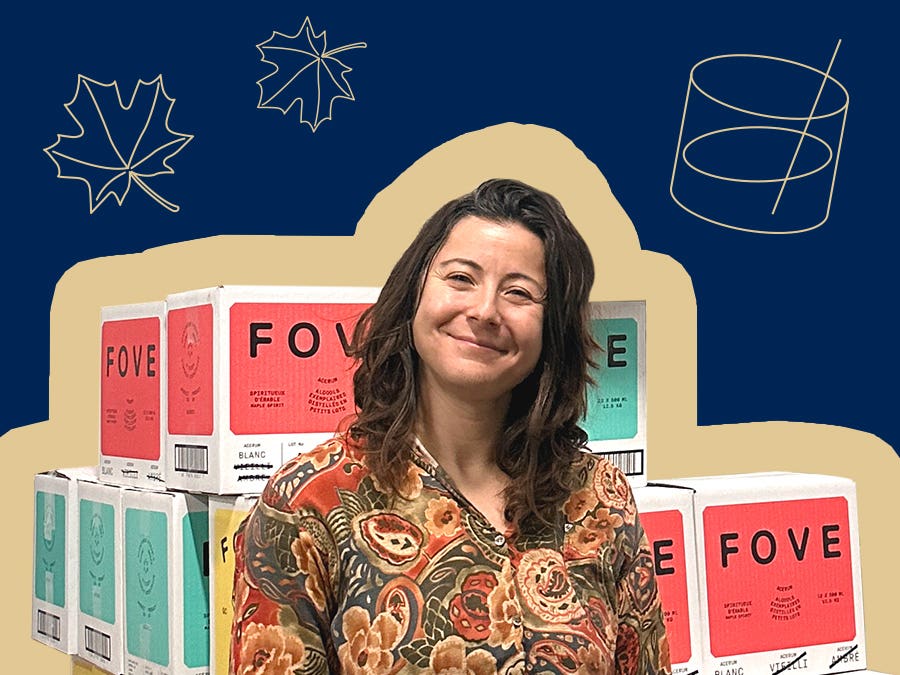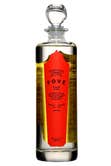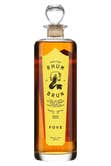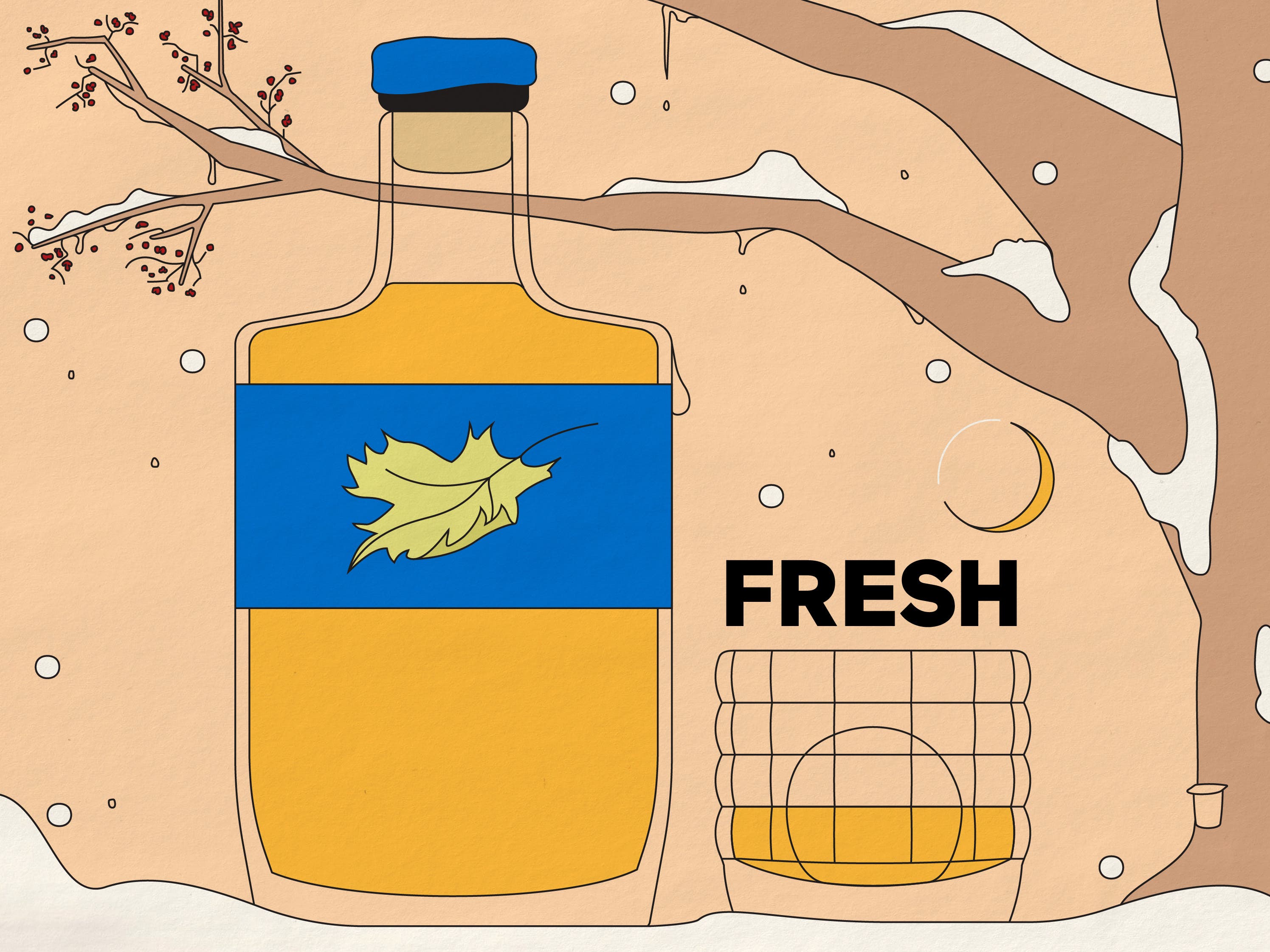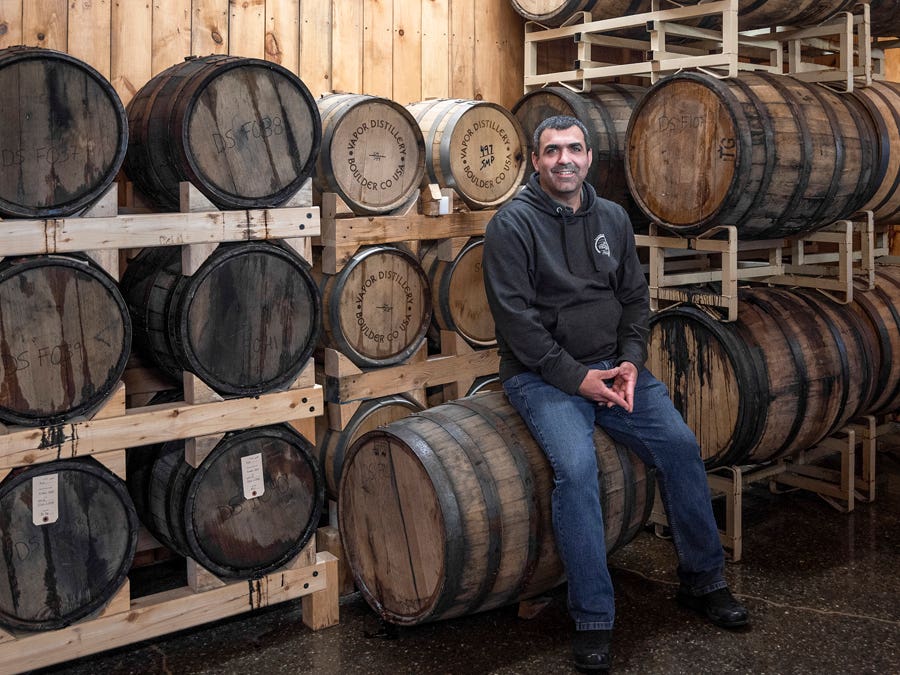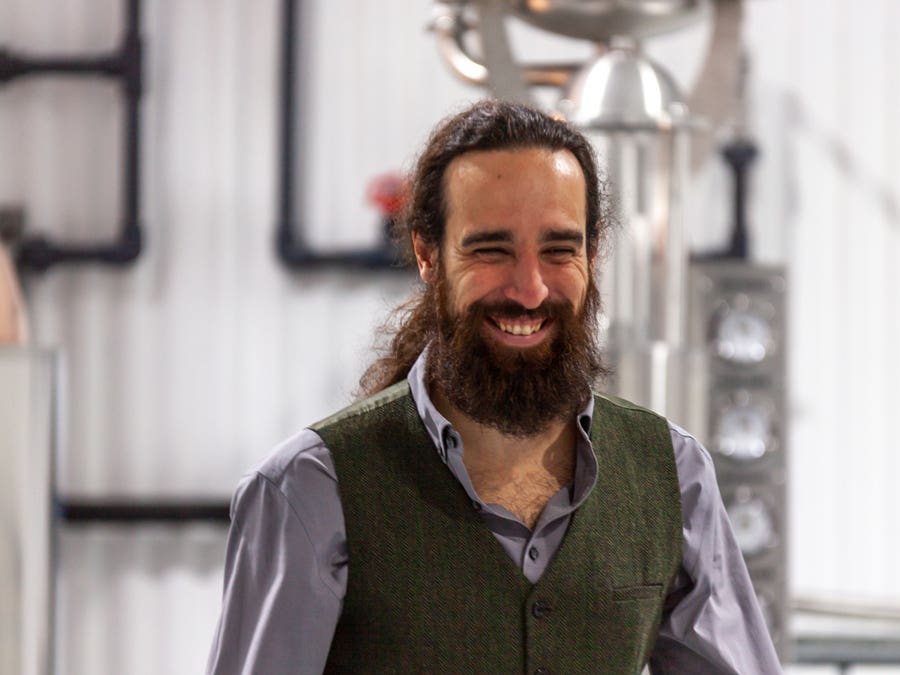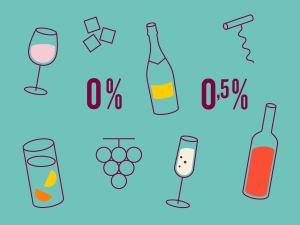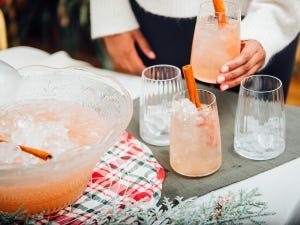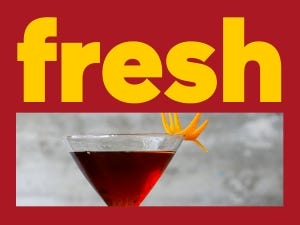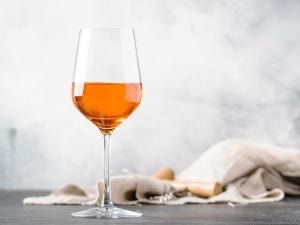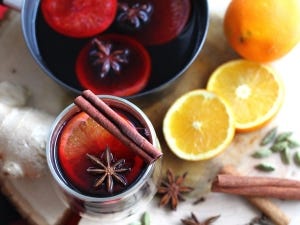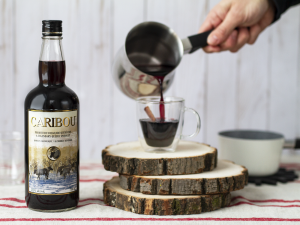A totally Québécois eau-de-vie made by fermenting concentrated Quebec maple sap, Acerum features a subtle yet complex flavour that’s miles away from maple taffy on snow. Corinne Cluis, founder of the FOVE distillery and a molecular biologist specializing in the aromatic qualities of yeast, explained what makes this spirit so unique.
When local maple feels novel
If you’ve never had it before, you can expect it to be relatively light. White Acerum evokes grappa, tequila and sake, with strong notes of pear, licorice and melon, as well as vegetal and floral qualities. Amber Acerum, on the other hand, is more like whisky or cognac, with buttery and woodsy aromas, great balance and a hint of caramel. It’s worth noting that neither is actually sweet! There’s a scientific reason for that.
“Even though Acerum is a maple product, it doesn’t taste like it, which creates a dissonance when people try it. Although it’s 40% alcohol, it doesn’t burn your throat. That’s because of the maple.”
– Corinne Cluis
Alchemy in a barrel
To make syrup, maple water has to be boiled. The heat causes caramelization through the Maillard reaction, a chemical process by which the sugars change and new compounds are created—that’s what gives the syrup its sweetness and a bit of umami. However, when distilled, these compounds disappear. Corinne explained that this is mainly why Acerum doesn’t have that signature maple taste.
Previous to that, during fermentation, the flavour profile already begins to shift. “The yeast metabolizes the sugar into alcohol and creates other aroma molecules based on the compounds in the maple syrup—and these do survive the distillation process,” the expert noted. Each strain of yeast produces different flavour qualities. Knowing this, Corinne used champagne yeast in her white Acerum to add lightness and an aroma of green fruit, and cachaça yeast in her amber Acerum to impart rounder notes of ripe fruit and wilted flowers.
There’s also a logical reason why the spirit is distilled in copper stills. “When combined with heat, copper acts as a catalyst for chemical reactions that form esters, which is the class of molecules that produces floral and fruity notes. It introduces such a pronounced scent.”


Amber Acerum has an extra step—it’s aged in charred or toasted oak casks. The contact with the wood releases a variety of molecules that add notes of caramel and vanilla. What’s more, oxygen penetrates the wood, which isn’t hermetic, causing oxidization in the still and transforming the molecules, softening their flavour profile and sometimes even infusing a hint of fruitiness.
A host of ideas on how to enjoy Acerum
Where do you start when it comes to savouring this local product? Amber Acerum can be used like whisky in cocktails, so it would be delicious in an old fashioned, with the orange zest complementing the roundness of the spirit. Corinne also recommends subbing in maple syrup for the simple syrup. And it goes without saying that Acerum is a natural choice for BYOB sugar shacks! Not only does it go beautifully with maple desserts, but its dryness is a great foil for the heaviness of the food traditionally served there. Unsurprisingly, Corinne has no shortage of ideas for how to enjoy this product:
“It’s excellent as a digestif, on its own, added to coffee, in a trou normand with an apple, pear or citrus sorbet, or in some warm maple sap concentrate, replacing the usual gin.”
As for white Acerum, a little bit of citrus or other tangy ingredients will enhance its freshness and vegetal side. Think: a margarita, a sour or a daiquiri. It can also be used in cooking to make, for instance, an Acerum gravlax or stir-fried shrimp flambé.
Feeding a tradition of sharing
No matter how you decide to savour this maple eau-de-vie, it’s an enjoyable drink that invites people to share flavours and spend quality time together at the end of a meal. It’s also a pioneering product, as the first spirit to soon obtain its own controlled designation of origin here in Quebec, meaning it will be the only alcohol to be produced exclusively in the province. So for a product to be called Acerum, it must be made from local maple sap and the entire process, from fermentation to bottling, must take place in Quebec. “No one else has ever done this—we're writing the rules. It’s so exciting!” said the trained biologist. She would love for people here to take ownership of Acerum, be proud of it and tell folks from all over about it, adding that it has the potential to become a phenomenon like ice cider did a few years ago.
Corinne drew similarities between this decidedly Québécois spirit and the movement to embrace our terroir in local cuisine. “For the last ten years or so, chefs have been creating incredibly refined dishes using products from the province’s terroir. It’s similar with Acerum, because we’re taking maple syrup—an iconic Quebec ingredient—and working it into something else entirely.” We’ll drink to that. Here’s to Acerum!
Products to discover
More about Acerum
-
Read more
Have you heard of Acerum? In this edition of Fresh, we’re looking at this newcomer on the fine spirits scene—an eau-de-vie made from the fermentation and distillation of maple sap.
-
Read more
The Eastern Townships, with Mount Shefford as a backdrop, is where the Bourassa brothers harvest some 2,500,000 litres of maple water per year, and where they nurture their second passion—the distillery.
-
Read more
The Temiscouata Distillery, located in Auclair in the Lower Saint Lawrence region, is made up of some 40 maple syrup producers who decided to innovate, stimulate the economy and take charge of their industry by producing Acerum, a maple syrup-based spirit!
 Access to SAQ Inspire personalized services and store inventories are unavailable at the moment.
Access to SAQ Inspire personalized services and store inventories are unavailable at the moment. Free in-store delivery with purchases of $75+ in an estimated 3 to 5 business days.
Free in-store delivery with purchases of $75+ in an estimated 3 to 5 business days. 
